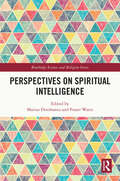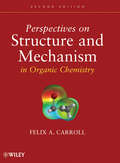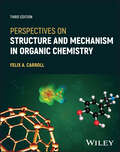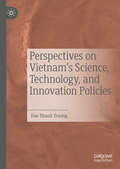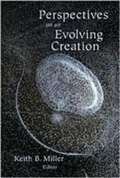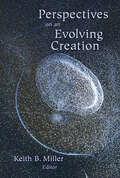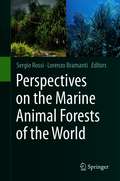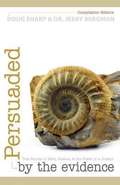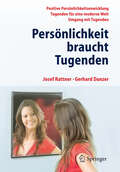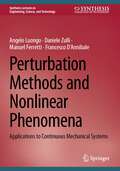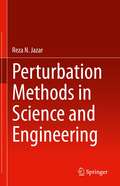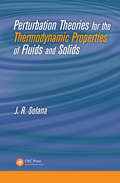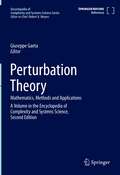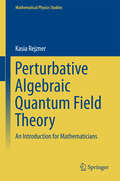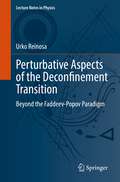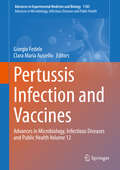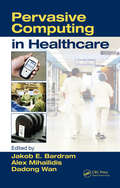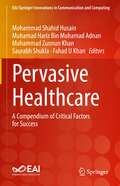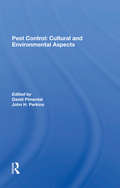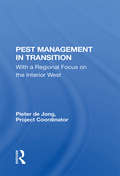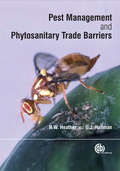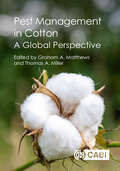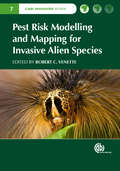- Table View
- List View
Perspectives on Spin Glasses
by Pierluigi Contucci Cristian GiardinàPresenting and developing the theory of spin glasses as a prototype for complex systems, this book is a rigorous and up-to-date introduction to their properties. The book combines a mathematical description with a physical insight of spin glass models. Topics covered include the physical origins of those models and their treatment with replica theory; mathematical properties like correlation inequalities and their use in the thermodynamic limit theory; main exact solutions of the mean field models and their probabilistic structures; and the theory of the structural properties of the spin glass phase such as stochastic stability and the overlap identities. Finally, a detailed account is given of the recent numerical simulation results and properties, including overlap equivalence, ultrametricity and decay of correlations. The book is ideal for mathematical physicists and probabilists working in disordered systems.
Perspectives on Spiritual Intelligence (Routledge Science and Religion Series)
by Fraser Watts Marius DorobantuThe topic of intelligence involves questions that cut deep into ultimate concerns and human identity, and the study of intelligence is an ideal ground for dialogue between science and religion. This volume investigates the notion of spiritual intelligence from a variety of perspectives, bringing together contributions from theology, computer science, linguistics, psychology, biology, and cognitive science. It defines spiritual intelligence as “processing things differently, not processing different things” and aims to describe it in naturalistic terms. Spiritual intelligence is not regarded as a separate mental module or a magical ability to interact with the supernatural but rather as a specific, more spiritual way of engagement with reality, which has observable cognitive, phenomenal, and linguistic characteristics. The book is valuable reading for those working at the interface between science and spirituality.
Perspectives on Statistical Thermodynamics
by Yoshitsugu OonoThis original text develops a deep, conceptual understanding of thermal physics, highlighting the important links between thermodynamics and statistical physics, and examining how thermal physics fits within physics as a whole, from an empirical perspective. The first part of the book is devoted to elementary, mesoscopic topics such as Brownian motion, which leads to intuitive uses of large deviation theory, one of the pillars of modern probability theory. The book then introduces the key concepts behind statistical thermodynamics, and the final part describes more advanced and applied topics from thermal physics such as phase transitions and critical phenomena. This important subject is presented from a fresh perspective and in a highly pedagogical manner, with numerous worked examples and relevant cultural side notes throughout, making it ideal as either a textbook for advanced thermal physics courses or for self-study by undergraduate and graduate students in physics and engineering.
Perspectives on Structure and Mechanism in Organic Chemistry
by Felix A. CarrollHelps to develop new perspectives and a deeper understanding of organic chemistryInstructors and students alike have praised Perspectives on Structure and Mechanism in Organic Chemistry because it motivates readers to think about organic chemistry in new and exciting ways. Based on the author's first hand classroom experience, the text uses complementary conceptual models to give new perspectives on the structures and reactions of organic compounds.The first five chapters of the text discuss the structure and bonding of stable molecules and reactive intermediates. These are followed by a chapter exploring the methods that organic chemists use to study reaction mechanisms. The remaining chapters examine different types of acid-base, substitution, addition, elimination, pericyclic, and photochemical reactions.This Second Edition has been thoroughly updated and revised to reflect the latest findings in physical organic chemistry. Moreover, this edition features:New references to the latest primary and review literatureMore study questions to help readers better understand and apply new concepts in organic chemistryCoverage of new topics, including density functional theory, quantum theory of atoms in molecules, Marcus theory, molecular simulations, effect of solvent on organic reactions, asymmetric induction in nucleophilic additions to carbonyl compounds, and dynamic effects on reaction pathwaysThe nearly 400 problems in the text do more than allow students to test their understanding of the concepts presented in each chapter. They also encourage readers to actively review and evaluate the chemical literature and to develop and defend their own ideas.With its emphasis on complementary models and independent problem-solving, this text is ideal for upper-level undergraduate and graduate courses in organic chemistry.
Perspectives on Structure and Mechanism in Organic Chemistry
by Felix A. CarrollPERSPECTIVES ON STRUCTURE AND MECHANISM IN ORGANIC CHEMISTRY “Beyond the basics” physical organic chemistry textbook, written for advanced undergraduates and beginning graduate students Based on the author’s first-hand classroom experience, Perspectives on Structure and Mechanism in Organic Chemistry uses complementary conceptual models to give new perspectives on the structures and reactions of organic compounds, with the overarching goal of helping students think beyond the simple models of introductory organic chemistry courses. Through this approach, the text better prepares readers to develop new ideas in the future. In the 3rd Edition, the author thoroughly updates the topics covered and reorders the contents to introduce computational chemistry earlier and to provide a more natural flow of topics, proceeding from substitution, to elimination, to addition. About 20% of the 438 problems have been either replaced or updated, with answers available in the companion solutions manual. To remind students of the human aspect of science, the text uses the names of investigators throughout the text and references material to original (or accessible secondary or tertiary) literature as a guide for students interested in further reading. Sample topics covered in Perspectives on Structure and Mechanism in Organic Chemistry include: Fundamental concepts of organic chemistry, covering atoms and molecules, heats of formation and reaction, bonding models, and double bonds Density functional theory, quantum theory of atoms in molecules, Marcus Theory, and molecular simulations Asymmetric induction in nucleophilic additions to carbonyl compounds and dynamic effects on reaction pathways Reactive intermediates, covering reaction coordinate diagrams, radicals, carbenes, carbocations, and carbanions Methods of studying organic reactions, including applications of kinetics in studying reaction mechanisms and Arrhenius theory and transition state theory A comprehensive yet accessible reference on the subject, Perspectives on Structure and Mechanism in Organic Chemistry is an excellent learning resource for students of organic chemistry, medicine, and biochemistry. The text is ideal as a primary text for courses entitled Advanced Organic Chemistry at the upper undergraduate and graduate levels.
Perspectives on Vietnam’s Science, Technology, and Innovation Policies
by Dao Thanh TruongThis book provides an overview of the science, technology, and innovation (STI) policies in Vietnam in a globalized world. Science, technology and innovation policies play important roles in boosting research and development, promoting entrepreneurship and building national innovation systems, especially in developing countries. The author offers in-depth analyses and insights on the STI system of Vietnam and provides comparisons with the major STI development trends around the world. Each chapter of the book includes intensive studies and analyses of the STI system and policies in Vietnam, providing valuable arguments and essential tools for students, researchers, and policy makers in the field of science and technology management, political science, public policy and business studies. The author then addresses potential challenges and proposes policy recommendations to overcome them to improve the performance of the Vietnam's STI system in the context of globalized economies and international integration of science and technology.
Perspectives on an Evolving Creation
by Keith B. MillerAccording to the authors of this book, who explore evolutionary theory from a clear Christian perspective, the common view of conflict between evolutionary theory and Christian faith is mistaken. Written by contributors representing the natural sciences, philosophy, theology, and the history of science, this thought-provoking work is informed by both solid scientific knowledge and keen theological insight. The three sections of the book address (1) relevant biblical, historical, and scientific background, (2) the scientific evidence for an evolving creation, and (3) theological issues commonly raised in connection with evolution, including the nature of God's creative activity, the meaning of the miraculous, and the uniqueness of humankind. Woven through the volume are short meditations designed to direct readers toward worshiping the God of providence.
Perspectives on an Evolving Creation
by Keith B. MillerAccording to the authors of this book, who explore evolutionary theory from a clear Christian perspective, the common view of conflict between evolutionary theory and Christian faith is mistaken. Written by contributors representing the natural sciences, philosophy, theology, and the history of science, this thought-provoking work is informed by both solid scientific knowledge and keen theological insight. The three sections of the book address (1) relevant biblical, historical, and scientific background, (2) the scientific evidence for an evolving creation, and (3) theological issues commonly raised in connection with evolution, including the nature of God's creative activity, the meaning of the miraculous, and the uniqueness of humankind. Woven through the volume are short meditations designed to direct readers toward worshiping the God of providence.Contributors: Laurie J. Braaten Warren S. Brown Jr. David Campbell Robin Collins Edward B. Davis Terry M. Gray Jeffrey K. Greenberg Deborah B. Haarsma Loren Haarsma James P. Hurd Conrad Hyers David N. Livingstone Keith B. Miller John C. Munday Jr. George L. Murphy Mark A. Noll Robert John Russell Howard J. Van Till David L. Wilcox Jennifer Wiseman
Perspectives on the Marine Animal Forests of the World
by Sergio Rossi Lorenzo BramantiMarine Animal Forests (MAFs) are spread all over the world. Composed by suspension feeding organisms (e.g. corals, gorgonians, sponges, bryozoans, bivalves, etc.), MAFs constitute a vast number of marine ecosystems such as coral reefs, cold water corals, sponge grounds, bivalve beds, etc. The surface covered by these systems is prominent (at the scale of the oceans of the planet), though poorly known. In a previous book (Marine Animal Forests, the ecology of benthic biodiversity hotspots), several aspects of the MAFs were described and discussed, building the basis for a holistic approach with the aim of putting these shallow and deep sea ecosystems under a common umbrella. The main target of the present book is to identify and address important topics which were not covered in the previous three volumes. Bryozoans or Polychaeta, for example, are treated in this volume, as well as hydrothermal vents ecosystems and submarine caves, the chemical ecology in MAFs or the nursery effect on these ecosystems. The vastity of the MAF concept opens new insights in the biology, physiology, biodiversity of the organisms structuring these highly biodiverse ecosystems and on the dangers threatening them (such as microplastics or the role of invasive species as an impact of their trophic ecology or distribution). In a fast changing world, in which the complexity of MAFs is at risk, we propose an in-depth analysis of many aspects that may be inspirational for future research lines in marine biology and ecology.
Persuaded by the Evidence
by Dr Jerry Bergman Doug SharpTrue Stories of Faith, Science, & the Power of a Creator A unique and interesting collection of true stories from Christians - each sharing his personal journey to find the biblical truth of a six-day creation! From scientists in the midst of complex research to youth ministers, and more, see how each began at a different point and place in his life to question the supposed truth of evolution and how faith and actual evidence led to his embracing a creation-based, biblical world-view. In their testimonies, you will read about their search for answers, often unavailable through their school, their church, or scientific knowledge - and how the discoveries they made have shaped their faith and changed their lives. Seeking answers for yourself? Discover the powerful truths these individuals now share - and find yourself also persuaded by the evidence! Contributors include: Carl Kerby, Curt Sewell, Dr. Walter T. Brown, Dr. Raymond Damadian, Frank Sherwin, and more! Stories Focus on: Powerful testimonies of the concept of a creator Discovering creation truths within scientific careers Understanding the relevance of Genesis to your personal faith Finding answers to life's toughest questions through understanding Genesis Appreciating the powerful influence of creation believers and scholars Features a "Founding Fathers of Creationism" special section focused on Dr. Henry Morris, Dr. John Whitcomb, Dr. Andrew Snelling, and more. Special spotlight! Short biography of Dr. Mortimer Adler, chairman of the board of editors of Encyclopedia Britannica for many years
Persönlichkeit braucht Tugenden
by Gerhard Danzer Josef RattnerSpielen im 21. Jahrhundert Tugenden eigentlich noch eine Rolle? Der Autor beschreibt in seinem Buch neun Charakterzüge und Wesensmerkmale, die für die Entwicklung eines Menschen seiner Meinung nach von Bedeutung sind. Dazu gehören beispielsweise Besonnenheit, Hingabe, Humor, aber auch Vornehmheit. Ein Buch, mit dem der Autor auf unterhaltsame Art und Weise zum Nachdenken über die eigenen Tugenden anregt.
Perturbation Methods and Nonlinear Phenomena: Applications to Continuous Mechanical Systems (Synthesis Lectures on Engineering, Science, and Technology)
by Angelo Luongo Daniele Zulli Manuel Ferretti Francesco D’AnnibaleThis concise text introduces the reader to the use of perturbation methods, able to investigate nonlinear phenomena in continuous (not only discrete) mechanical systems. Distinct from the classic books on perturbation methods, the algorithms are directly illustrated for continuous systems, referring to a very simple case-study as well as to a metamodel, for which Statics, Buckling, Dynamics and Bifurcation behavior are quickly analyzed. Moreover, fundamental mechanical aspects are discussed in dealing with applications. Concepts herein are reinforced with worked examples at the end the book, relevant to several continuous systems.
Perturbation Methods in Science and Engineering
by Reza N. JazarPerturbation Methods in Science and Engineering provides the fundamental and advanced topics in perturbation methods in science and engineering, from an application viewpoint. This book bridges the gap between theory and applications, in new as well as classical problems. The engineers and graduate students who read this book will be able to apply their knowledge to a wide range of applications in different engineering disciplines. The book begins with a clear description on limits of mathematics in providing exact solutions and goes on to show how pioneers attempted to search for approximate solutions of unsolvable problems. Through examination of special applications and highlighting many different aspects of science, this text provides an excellent insight into perturbation methods without restricting itself to a particular method. This book is ideal for graduate students in engineering, mathematics, and physical sciences, as well as researchers in dynamic systems.
Perturbation Theories for the Thermodynamic Properties of Fluids and Solids
by J. R. SolanaThis book, Perturbation Theories for the Thermodynamic Properties of Fluids and Solids, provides a comprehensive review of current perturbation theories-as well as integral equation theories and density functional theories-for the equilibrium thermodynamic and structural properties of classical systems. Emphasizing practical applications, the text
Perturbation Theory: Mathematics, Methods and Applications (Encyclopedia of Complexity and Systems Science Series)
by Giuseppe GaetaThis volume in the Encyclopedia of Complexity and Systems Science, Second Edition, is devoted to the fundamentals of Perturbation Theory (PT) as well as key applications areas such as Classical and Quantum Mechanics, Celestial Mechanics, and Molecular Dynamics. Less traditional fields of application, such as Biological Evolution, are also discussed. Leading scientists in each area of the field provide a comprehensive picture of the landscape and the state of the art, with the specific goal of combining mathematical rigor, explicit computational methods, and relevance to concrete applications. New to this edition are chapters on Water Waves, Rogue Waves, Multiple Scales methods, legged locomotion, Condensed Matter among others, while all other contributions have been revised and updated. Coverage includes the theory of (Poincare’-Birkhoff) Normal Forms, aspects of PT in specific mathematical settings (Hamiltonian, KAM theory, Nekhoroshev theory, and symmetric systems), technical problems arising in PT with solutions, convergence of series expansions, diagrammatic methods, parametric resonance, systems with nilpotent real part, PT for non-smooth systems, and on PT for PDEs [write out this acronym partial differential equations]. Another group of papers is focused specifically on applications to Celestial Mechanics, Quantum Mechanics and the related semiclassical PT, Quantum Bifurcations, Molecular Dynamics, the so-called choreographies in the N-body problem, as well as Evolutionary Theory. Overall, this unique volume serves to demonstrate the wide utility of PT, while creating a foundation for innovations from a new generation of graduate students and professionals in Physics, Mathematics, Mechanics, Engineering and the Biological Sciences.
Perturbative Algebraic Quantum Field Theory
by Kasia RejznerPerturbative Algebraic Quantum Field Theory (pAQFT), the subject of this book, is a complete and mathematically rigorous treatment of perturbative quantum field theory (pQFT) that doesn't require the use of divergent quantities and works on a large class of Lorenzian manifolds. We discuss in detail the examples of scalar fields, gauge theories and the effective quantum gravity. pQFT models describe a wide range of physical phenomena and have remarkable agreement with experimental results. Despite this success, the theory suffers from many conceptual problems. pAQFT is a good candidate to solve many, if not all, of these conceptual problems. Chapters 1-3 provide some background in mathematics and physics. Chapter 4 concerns classical theory of the scalar field, which is subsequently quantized in chapters 5 and 6. Chapter 7 covers gauge theory and chapter 8 discusses effective quantum gravity. The book aims to be accessible to researchers and graduate students, who are interested in the mathematical foundations of pQFT.
Perturbative Aspects of the Deconfinement Transition: Beyond the Faddeev-Popov Paradigm (Lecture Notes in Physics #1006)
by Urko ReinosaThis book offers an original view of the color confinement/deconfinement transition that occurs in non-abelian gauge theories at high temperature and/or densities. It is grounded on the fact that the standard Faddeev-Popov gauge-fixing procedure in the Landau gauge is incomplete. The proper analysis of the low energy properties of non-abelian theories in this gauge requires, therefore, the extension of the gauge-fixing procedure, beyond the Faddeev-Popov recipe. The author reviews various applications of one such extension, based on the Curci-Ferrari model, with a special focus on the confinement/deconfinement transition, first in the case of pure Yang-Mills theory, and then, in a formal regime of Quantum Chromodynamics where all quarks are considered heavy. He shows that most qualitative aspects and also many quantitative features of the deconfinement transition can be accounted for within the model, with only one additional parameter. Moreover, these features emerge in a systematic and controlled perturbative expansion, as opposed to what would happen in a perturbative expansion within the Faddeev-Popov model. The book is also intended as a thorough and pedagogical introduction to background field gauge techniques at finite temperature and/or density. In particular, it offers a new and promising view on the way these techniques might be applied at finite temperature. The material aims at graduate students or researchers who wish to deepen their understanding of the confinement/deconfinement transition from an analytical perspective. Basic knowledge of gauge theories at finite temperature is required, although the text is designed in a self-contained manner, with most concepts and tools introduced when needed. At the end of each chapter, a series of exercises is proposed to master the subject.
Pertussis Infection and Vaccines: Advances in Microbiology, Infectious Diseases and Public Health Volume 12 (Advances in Experimental Medicine and Biology #1183)
by Giorgio Fedele Clara Maria AusielloThis book provides a comprehensive overview of pertussis - also known as whooping cough. The first part discusses the evolution the genus Bordetellae and the molecular epidemiology of B. pertussis, while the following chapters focus on the role of B. pertussis virulence factors in infection and disease and on the mechanisms of the immune response to infection and vaccination. The book also explores the prevention and control of the disease as well as its clinical management, with the finally section addressing vaccination, from improved immunization strategies to novel vaccines.Pertussis remains one of the most poorly controlled vaccine-preventable diseases around the globe. Universal vaccination has dramatically reduced its incidence but has failed to bring it completely under control. In recent decades, changes in pertussis epidemiology have been noted, likely related to the use of acellular pertussis vaccines, which in many countries have replaced older-generation, whole-cell pertussis vaccines. Several years after their introduction, it is becoming apparent that immunity conferred by acellular vaccines wanes more rapidly than expected. Unlike whole-cell vaccines, acellular vaccines, while protecting against the disease, do not seem to prevent colonization and transmission. Increasing incidence among adolescents and adults makes them a reservoir for transmission to unimmunized infants, who in turn are at risk of severe disease and death. This book is a valuable resource for researchers and clinicians in the field of medical microbiology, vaccine research and infectious diseases.
Pervasive Computing in Healthcare
by Jakob E. Bardram Alex Mihailidis Dadong WanWith skyrocketing costs due to the increase in the elderly population, a rapid increase in lifestyle-related and chronic diseases, demand for new medical treatments and technologies, and a shortage in the number of available clinicians, nurses, and other caregivers, the challenges facing the healthcare industry seem insurmountable. However, by tra
Pervasive Healthcare: A Compendium of Critical Factors for Success (EAI/Springer Innovations in Communication and Computing)
by Saurabh Shukla Mohammad Shahid Husain Muhamad Hariz Bin Muhamad Adnan Mohammad Zunnun Khan Fahad U. KhanThis book provides in depth knowledge about critical factors involved in the success of pervasive healthcare. The book first presents critical components and importance of pervasive healthcare. The authors then give insight into the pervasive healthcare information systems and key consideration related to remote patient monitoring and safety. The book provides in-depth discussion about the security issues and protocols for pervasive healthcare. This book explores concepts and techniques behind the successive pervasive healthcare systems by providing in-depth knowledge about patient empowerment, remote patient monitoring, network establishment and protocols for effective pervasive healthcare. The book also provides case studies in the field. It is an ideal resource for researchers, students and healthcare organizations to get insight about the state of the art in pervasive healthcare systems.Provides current research, developments, and applications in pervasive healthcare;Includes technologies such as machine learning, cryptography, fog computing, and big data in the advancement of e-healthcare;Pertinent for researchers, students, practitioners and healthcare decision makers.
Pest Control: Cultural And Environmental Aspects
by David Pimentel John H. PerkinsThe field of pest control research, of increasing importance in a world short of food, has been plagued for many years by a variety of problems, among them (1) the instability (including pesticide resistance) of many control techniques, (2) the continuing need for improved pest management methods to increase world food supplies, and (3) the environmental and social hazards of currently used pesticides. What historical or other factors affect the ability of science to generate useful new technologies to alleviate these three major problems? Are there barriers to cooperation among the different pest control specialists? This book attempts to answer these questions, examining past events and projecting likely impacts on contemporary pest management systems. The authors--sociologists, economists, lawyers, ecologists, political scientists, and pest control scientists--examine the social, economic, political, and ethical factors that are important in shaping pest management systems, as well as developmental patterns that show the importance of these factors in shaping today's systems.
Pest Management In Transition: With A Regional Focus On The Interior West
by Pieter De JongThis volume examines current pest control strategies, introduces new alternatives for pest control in the interior West, and documents successful integrated pest management programs from across the nation. The contributors include leaders in alternative pest control research, representatives of regional and federal agencies, grower organizations, i
Pest Management and Phytosanitary Trade Barriers
by Neil W. Heather Guy J. HallmanA significant amount of the world's economy is based upon the international trade of agricultural produce. For the producing countries, a growing concern is the potential economic and ecological damage that invasive species could cause. While threats can be decreased through the regulation of items potentially carrying invasive species, the effect of such restrictions on international trade also needs to be considered. A balance must therefore be met that permits the transfer of produce while filtering out unwanted pests. Drawing on the author's extensive experience, the social and financial implications of phytosanitary trade barriers are reviewed. This book offers valuable and comprehensive coverage of pest related barriers and strategies for their implementation.
Pest Management in Cotton: A Global Perspective
by Zeeshan AhmedThis book presents a global overview of the background to, and the current state of, crop protection and pest management in cotton crops. Cotton is one of the most economically important crops in the world and has been grown for centuries but maintaining high yields of good quality requires sophisticated approaches to pest management. The introduction and use of pesticides over the decades significantly increased cotton yields but lead to many adverse environmental impacts. Over time, new and alternative insecticides were developed but overuse has enabled pests to develop significant resistance. The development of genetically modified cotton varieties with toxins derived from Bacillus thuringiensis enabled much improved control of lepidopteran larvae, including bollworms, but as the toxins had no effect on sucking pests, farmers had no choice but to continue using insecticides. Also, some of the new cotton varieties developed in recent times have not adapted to different climatic conditions and the quality of cotton fibre declined as a result. This book shows the need for more research to select cotton varieties with high quality fibres suitable for different cotton growing areas and to develop integrated pest management strategies to minimise the use of pesticides. It also demonstrates the need for an inter-disciplinary approach bringing together plant breeders, entomologists, plant pathologists, agronomists and agricultural engineers to achieve high yields of high quality cotton. In the future, farmers will need to adopt new technology to determine when and how pesticides are used in conjunction with cultural and biological control strategies. · Emphasises the importance of research on growing cotton in a world experiencing climate change · Demonstrates how crucial crop protection is in achieving high yields of high quality cotton · Shows how new technology will bring major changes in how cotton is grown in the future
Pest Risk Modelling and Mapping for Invasive Alien Species
by Frank Frank Catherine Catherine Steven Steven Richard Richard Patrick Patrick Denys Denys David David Rieks Rieks Craig Craig Susan Susan Darren Darren Marla Marla Hazel Hazel Roger Roger Robert C Venette Manuel Manuel Christelle ChristelleOver the past century, the number of species that have been transported to areas outside their native range has increased steadily. New pests and pathogens place biological pressure on valuable resident species, but strict bans may conflict with trading and travel needs. An overview of how the conflict can be managed using pest risk mapping and modelling, this book uses worked examples to explain modelling and help development of tool kits for assessment.

